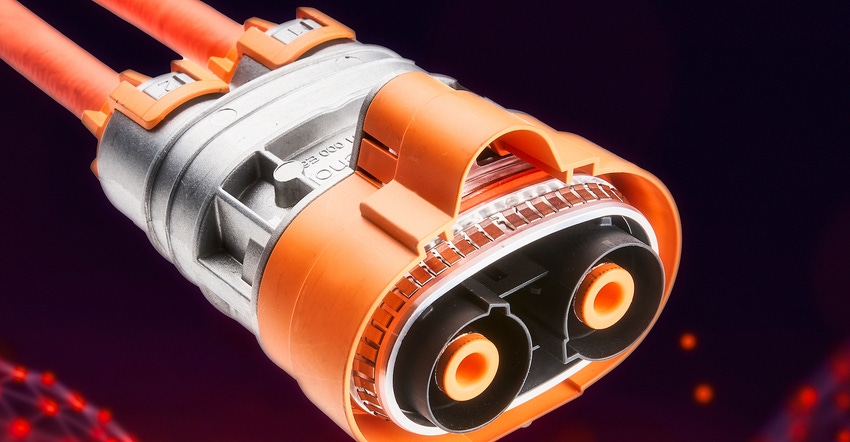Halogen-free, flame-retardant grades feature high material and color stability, robust strength, and toughness.
December 22, 2021

Cable harnesses are among the most complex assemblies found in electric vehicles (EVs). Their numerous connectors not only all have to be marked in different colors to indicate a range of functions and support assembly and maintenance, but they also must be flame retardant and mechanically robust. With the polyamide 6 compound Durethan BKV30FN04, Lanxess has developed a material that has already been tried and tested in numerous series applications, including in cable harnesses for electric models produced by a European-US automotive manufacturer.
“In contrast to polyamides that are flame-protected with red phosphorous, our halogen-free, flame-retardant compound can also be dyed with bright, vivid colors like orange (RAL 2003) and yellow,” said Bernhard Stoll, an expert in the use of plastics in electrical and electronic components at Lanxess. “The compound and color exhibit a high level of heat stability, which means that the different connectors can be easily and reliably distinguished throughout the vehicle’s entire service life.” The connectors are manufactured by Amphenol-Tuchel Electronics GmbH in Heilbronn, Germany.
Pre-colored compounds reduce costs
The polyamide 6 compound from Lanxess achieved the V-0 classification (test body thickness: 0.75 mm) in the UL 94 flammability test. “We have the compounds listed by UL on the Yellow Card under ‘All Colors,’ which also includes colors like yellow, orange, and blue. This means that processors will not have to color the product themselves or have the product undergo the time-consuming UL certification process. They can simply use our pre-colored compounds as they are, which helps to cut costs,” said Stoll.
Cable harnesses run along the entire length and width of the vehicle and bundle all the different on-board power supply lines for electric and electronic functions like power converters, battery charging systems, electric drives, and infotainment systems. The total length of the cables can reach several kilometers, which is one of the reasons why cable harnesses are so heavy. The complexity of cable harnesses makes them very expensive components, which is why the connectors must not break during installation. “Our compound is extremely strong and tough, meaning that the connectors can easily withstand bumps or being dropped,” said Stoll. The thermoplastic is highly resistant to chemicals, so its strength and stiffness are barely compromised upon contact with electrolytes or coolants. It also exhibits excellent tracking resistance, achieving a CTI (Comparative Tracking Index, IEC 60112) value of 600 in orange.
Wide processing window
Durethan BKV30FN04 is used for connectors in the fields of electro-mobility, as well as signal transmission technology and industrial engineering. “Here, too, our compound has proved suitable for injection molding in a stable process within a wide processing window. The material’s flame-retardant additives leave hardly any deposit in the mold, which helps to ensure a long tool service life and efficient production,” said Stoll. And when it comes to occupational hygiene, the polyamide 6 is easier to handle than equivalent compounds that are flame-protected with red phosphorous.
You May Also Like


